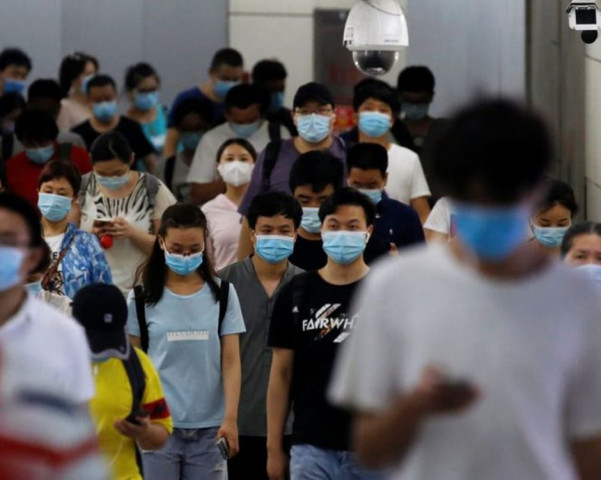Will global monetary easing be an antibiotic?
World leaders need to take bigger and bolder steps to get global economies moving

In a much expected but hurried move central banks across the globe cut their benchmark rates. The cuts have been much quicker and deeper than expected as the coronavirus spreads its tentacles across continents. It has impacted nearly all countries of the world and is a World Health Organization (WHO) declared emergency.
As of writing this piece, there were more than 27 million declared cases with nearly 0.9 million deaths and another 60,000 plus cases in critical situation. On the positive side over 19 million patients have recovered and have been discharged. Fatality rate under this epidemic is around 4% of the diagnosed cases. Males have nearly 62% higher risk of contracting the disease and people aged above 75 are more susceptible to the disease.
Economic backdrop
The world citizens look upon their leaders to align and rally together for combatting before this turns into an epidemic. The situation is best captured by the statement “the virus has killed more investors than infected” and broadly shows the risk at hand. The global stock markets, commodities, currencies and cryptos crash resulting in a blood bath across all asset classes. Developed economies’ stock markets witnessed trading halts on lower circuit breakers as oil prices witnessed one of the largest falls in history. As volatility becomes the new norm, search for safe heaven resulted in gold price hike by more than 10% since the start of the year.
The Organisation for Economic Cooperation and Development (OECD) has projected annual global GDP growth to drop to 2.4% in 2020, from an already weak footing of 2.9% in 2019. As a base case scenario, the growth in the first quarter CY2020 is expected to be negative. We have already seen Flybe, UK and Yes Bank, India, flirting with bankruptcies as governments scramble to keep these organisations afloat.
Is monetary easing the antidote?
Central bankers across the globe are picking up the time tested recipe of reducing interest rates to foster demand led economic recovery while others are actively monitoring the situation while keeping their sharpened monetary tools handy. Would the actions of these chairpersons be as productive as the likes of action taken by Greenspan in early 2000 or at the time of subprime mortgage in 2007? US Fed rates at those times were in the range of 5-6% and there was enough room to cut and inject the much needed liquidity in the system.
The pundits in the financial markets while being optimistic grapple with the thought question on whether the interest rate cuts would be able to serve as an antibiotic to the mutated version of the coronavirus plaguing the financial market? Will this be enough to kick start the global economies? Will the supply glut be nullified by the electric shocks of monetary easing and the economic lifeline start picking up in shape of customer demand? Will Covid-19 start extracting casualties of companies? Will the dip in oil prices be able to counter the oversupply and not add to the looming unemployment due to recession?
The challenge faced by the current incumbents is that there is very little room. Benchmark rates across all major economies are near their low levels and thus the potential to jump start the economies remain limited. This is coupled with the fact that the monetary policy route is much slower and takes time to bring results. Businesses will take time to come online or expand their capacities. T-Bonds and bills across countries have already seen a dip of 100-150 bps and are approaching near zero territory as investors dump junk bonds and risky assets in search of safety. Cash has always been the king and in the era of uncertainty it is more so nowadays.
Situation at hand further complicates, with activities coming to a standstill and countries going into lockdown to avoid the epidemic spread. Across the board, markets witness voluntary curb on meetings, trainings, conferences and schools shift to e-learning methods. Travellers prefer staying at home, shoppers avoid malls and restaurants depict a haunted look as precautionary measures are stepped up across board.
Need for fiscal stimulus
In the humble opinion of the writer, the leaders would have to take bigger and bolder steps to get the global economies moving. Coordinated fiscal steps would need to be taken between countries. Tax discounts, and subsidies would need to be increased by the government. Initiation of public sector development projects and increased spending on social welfare projects have to be the order of the day.
This is easier said than done. The challenge faced by governments is that the kitty at their disposal is much smaller than in earlier days. The funding source for government; primarily tax revenue, is getting drier as disposable income across all classes get limited. Various countries have started levying GST and VATs to augment their income in order to meet their running expenses for day-to-day operations.
While the combination of lower interest rates, fiscal easing and low oil prices are a great recipe for long-term recovery. Will we be able to stick it out in the short term is the million dollar question.
The writer is a student of behavioural finance, a treasury professional and a visiting faculty at IBA
Published in The Express Tribune, September 7th, 2020
Like Business on Facebook, follow @TribuneBiz on Twitter to stay informed and join in the conversation.



















COMMENTS
Comments are moderated and generally will be posted if they are on-topic and not abusive.
For more information, please see our Comments FAQ